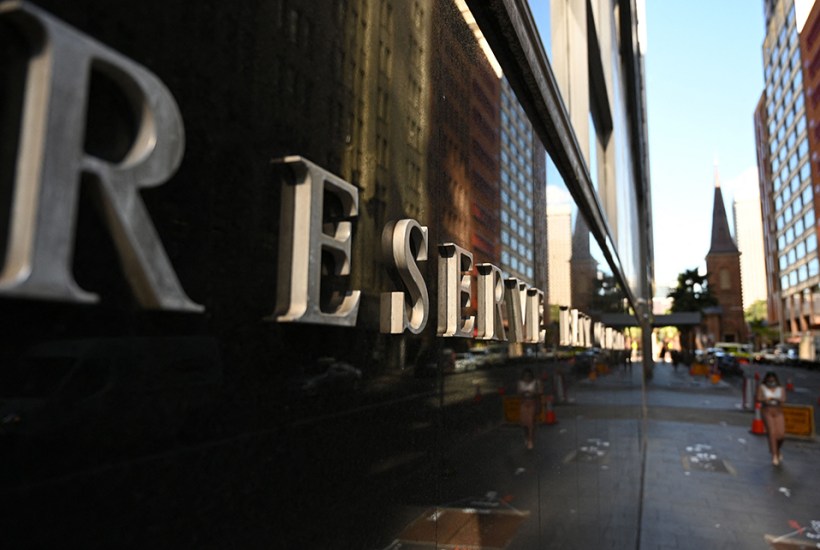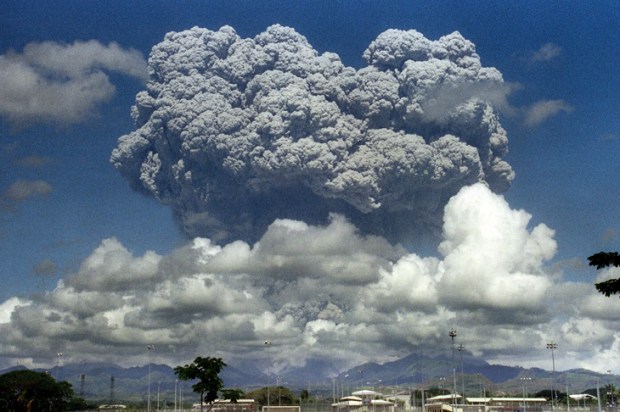The Bank of England has rejigged how it tenders for the polymer used in banknotes to reduce their carbon intensity. The UK central bank will investigate alternatives to gas-fired heating for its London headquarters and Essex printing works. Zoom calls are preferred to flights. Such are the details in the BoE’s first ‘Climate transition plan’ that was released in July and outlines how the central bank intends to reach net-zero emissions from its ‘physical’ operations by 2040.
The BoE is aiming to hit net zero a decade before the UK’s legislated goal because the central bank wants to ‘meet the standards it sets for others’ as it drives climate actions across the financial sector.
All the major central banks have adopted similar, ambitious green goals without any parliamentary or formal executive approval. Their motivation – as stated in a study released in April by the Reserve Bank of Australia – is that ‘climate change introduces new sources of risk’ for financial stability. In 2021, the European Central Bank even said it will embed environmental goals within monetary-policy decisions because wild and warmer weather can affect ‘inflation, output, employment, interest rates, investment and productivity; financial stability; and the transmission of monetary policy’.
Fired up about sustainability, central bankers are calling for net-zero targets. Warning of climate systemic risks, they talk of using their regulatory powers to enforce climate-risk-based capital standards on banks, conduct climate-change stress tests and force businesses to disclose carbon risks. To encourage such activism, governments have sought to appoint climate campaigners to leadership roles in central banks.
Many question whether it’s wise for central bankers who style themselves as above politics to tackle such a politically contentious issue. As central bankers push sustainability, two questions stand out.
The first is whether central bankers can achieve anything. Advocates say standardising climate-related disclosures and making them mandatory improves the pricing of climate risks. They say central banks highlighting the long-term financial risks of climate change will marshal public support towards net zero. They claim central banks can protect the financial system by limiting crises triggered by changed weather. They say central banks elevating climate risks would make commercial banks more wary of adding to – even reduce – the US$4 trillion lent to the fossil fuel industry.
Central bankers, however, might achieve less than activists hope. For one, climate change seems to pose little risk to financial stability. Bushfires, droughts, heat waves, rising and warmer oceans, storms and the like have never in modern times triggered a systemic crisis.
Second, the industries that lose from the shift to a low-carbon economy (‘stranded assets’) are unlikely to imperil the financial system. It’s usually the next big things that bubble to the point of crisis. Studies find that excessive debt is the common cause behind centuries of financial crashes, not weather patterns or passé things.
A third reason is banks don’t appear to be threatened by climate change and seem capable of judging such risks. Studies find no link between bank stability and disasters, even one on banks in the hurricane-prone Caribbean. A 2021 study by the Federal Reserve Bank of New York found banks even gain from calamities due to lending for rebuilding.
Another disappointment for activists is that central bank climate activism is unlikely to trouble fossil fuel companies. The fact is that when commercial banks shun fossil fuel companies, private firms buy these businesses cheaply. The Economist estimates private equity firms have swooped on at least US$60 billion of ‘dirty’ assets in recent years.
The fifth problem is that central banks have little legal basis on which to act along green lines. Central banks lack authority to direct bank lending. As there is no link between interest rates and meteorological events, central banks can only target net zero indirectly by using regulatory powers.
The other overarching question is whether central banks might stir risks when they pursue sustainability. The answer is yes. The biggest risk is that climate-risk management clashes with mandates to control inflation. The problem is that a shift to net zero stirs ‘greenflation’. This is the term for when the price of fossil fuels jumps because their supply falls before demand does. It’s rife.
The second hazard is that central banks are adopting an explicit role of capital allocation, which breaches their principle of ‘market neutrality’. Climate stress tests, for example, apply pressure on banks to shun lending to fossil fuel companies. While central banks control the quantity of money, the allocation of money is a choice for the political sphere. Smudge the roles of central bankers and politicians and central-bank credibility and independence could be dented.
Another risk is central banks might encourage a green investment bubble, one that could metastasise into a systemic threat. Another concern is central banks might engage in ‘mission creep’. What, for instance, stops central banks pursuing other social goals such as reducing inequality? Another problem with central bankers sanctioning progressive causes is that it might encourage banks on similar frolics. Some bankers, for instance, might think it OK to ‘de-bank’ customers for their views on climate change.
The little central banks might accomplish through climate activism and the risks they stir as they try is another example where the use of public regulatory powers is a poor substitute for political solutions. Rather than become politically tainted, it’s best central bankers push aside climate-change concerns and focus on their legislated tasks, at which, as today’s elevated inflation shows, they are failing.
Now, central banks recognise that executives and parliaments have ‘primary responsibility’ to act on climate change and that their contribution might be modest. Then why speak up? It’s true that government action on climate could hurt the economy to the point of creating financial instability. But that’s different from saying the weather or stranded assets could.
Perhaps the true green vocation of central bankers is to warn the public of the risks (above all on inflation) that politicians are taking with their climate actions. Their efforts to have greener office blocks and climate-friendly banknotes are worthwhile if they boost their credibility to do that.
Got something to add? Join the discussion and comment below.
Get 10 issues for just $10
Subscribe to The Spectator Australia today for the next 10 magazine issues, plus full online access, for just $10.
You might disagree with half of it, but you’ll enjoy reading all of it. Try your first month for free, then just $2 a week for the remainder of your first year.














Comments
Don't miss out
Join the conversation with other Spectator Australia readers. Subscribe to leave a comment.
SUBSCRIBEAlready a subscriber? Log in